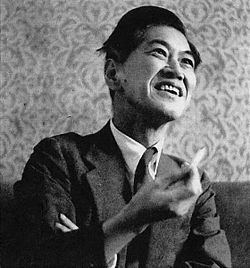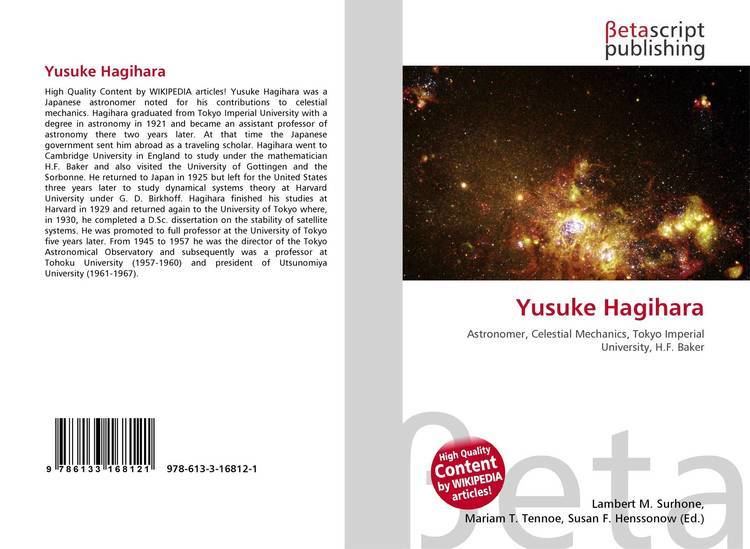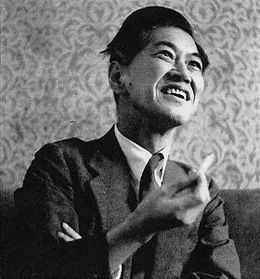Name Yusuke Hagihara Role Astronomer | Children Toshio Ogiwara | |
 | ||
Died January 29, 1979, Tokyo, Japan Books Celestial Mechanics: Perturbation theory, Gaps in the Distribution of Asteroids | ||
Yusuke Hagihara (萩原 雄祐, Hagihara Yūsuke, 28 March 1897 in Osaka – 29 January 1979 in Tokyo) was a Japanese astronomer noted for his contributions to celestial mechanics.
Contents

Biography

Hagihara graduated from Tokyo Imperial University with a degree in astronomy in 1921 and became an assistant professor of astronomy there two years later. In 1923 the Japanese government sent him abroad as a traveling scholar. Hagihara went to Cambridge University in England to study under the mathematician H.F. Baker and also visited the University of Göttingen and the Sorbonne.
He returned to Japan in 1925 but left for the United States three years later to study dynamical systems theory at Harvard University under G. D. Birkhoff on a Rockefeller Foundation Fellowship.
Hagihara finished his studies at Harvard in 1929 and returned again to the University of Tokyo where, in 1930, he completed a D.Sc. dissertation on the stability of satellite systems. He was promoted to full professor at the University of Tokyo five years later. From 1945 to 1957 he was the director of the Tokyo Astronomical Observatory and subsequently was a professor at Tohoku University (1957–1960) and president of Utsunomiya University (1961–1967). In 1961 he was elected vice-president of the International Astronomical Union and president of the IAU's commission on celestial mechanics.
He retired from all of his official duties, except for the Japan Academy, in 1967 and devoted himself to writing his comprehensive five volume work, Celestial Mechanics, which was based on his lecture notes.
Hagihara was regarded as a quiet and cultured gentleman, an excellent teacher and a capable administrator.
He has pointed out the importance of the post-Newton models for celestial mechanics, namely that developed by Georgi Manev.
